News & Events
Field Station: A Winter Wonderland
Posted on Friday, January 11, 2008
The song, Winter Wonderland, appeared in 1934, the creation of composer Felix Bernard and lyricist Richard B. Smith. Although often a Christmas song, this one applies whenever and wherever snow piles up and ice crystals form their reflective shapes. This combination always presents a magical moment at the Field Station and turns fantasy into reality.
We don't have Snowshoe Hares or Ptarmigan but we have Eastern Cottontails and Canada Geese. These and other forms of wildlife make their marks in the snow and give amateur trackers a good reason to pay attention . . . and learn directly from nature.
In my years of teaching Field Zoology in the Biology Department, our first lab activity of the second semester was always "Zoology in the Snow." Weeks in advance of the semester I put this title for the lab in the syllabus with great faith and hope that we would have snow covering the ground at the Field Station when that first lab period rolled around. On all but one occasion this "faith and hope" paid off.
We never took cars to drive out! On a nice snowy day (once even in a snowstorm) we always hiked from the main campus after being forewarned (a day in advance) that nature is raw and admonished that good field zoologists are adaptable. Armed with field guides and binoculars our first stop was Brittain Lake where small spots of open water generally enclosed paddling Canada Geese, apparently comfortable despite the chill. Often there was a goose or two walking in the snow or on the ice. A usual question was, "don't their legs get cold?" This was a great opportunity to explain a unique heat-exchange system in their legs known as counter-current circulation. This adaptation is amazing. The arteries and veins in the birds' legs work in tandem. Arteries supplying blood to the feet pass alongside the veins. The warm arterial blood flowing to the feet from the heart is cooled by venous blood flowing back to the heart where it is warmed again. Consequently, very little of a Canada Goose's body-heat is lost through its extremities and the temperature in the feet remains well above freezing.
After a dusting of snow we could always count on Cottontail tracks and the usual assignment was to determine the direction the animal was moving. That is easy. The hind feet tracks are always in front of the smaller front feet tracks when the animal is moving. The greater the distance between successive tracks, the faster the animal was hopping. While these basic facts learned automatically by scouts and outdoors people may seem trivial, not all college students who took Field Zoology were "raised in the woods" and, obviously, they took that course to learn something about animals. When there appeared on the trail a mishmash of tracks and some furry remains it was obvious that an owl had feasted after the snowfall. We have Barred Owls and Great Horned Owls at the Field Station and the bits and pieces of prey do not help identify the owl. But a rhetorical question might have been, "how would you determine the difference between the two owl species?" A quick check in the field guide helped answer the question (if it wasn't already obvious).
Many of these thoughts and nostalgic memories flooded my mind as I walked the familiar Lucile Frey Nature Trail in its wintry wonderland at the Field Station a few days after our new year began. I also recalled lying in the snow making "snow angels" with college students and showing off my own sadomasochistic ego by walking out into the flowing, icy water of the Little Neshannock Creek without waders to show the students that field biologists aren't made out of sugar . . . we don't dissolve!
Clarence Harms, Director
Field Station
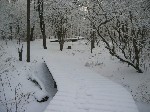
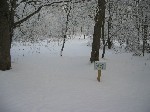
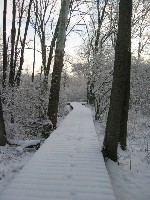
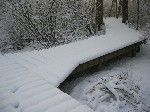
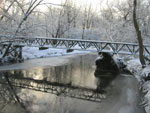
More Stories



